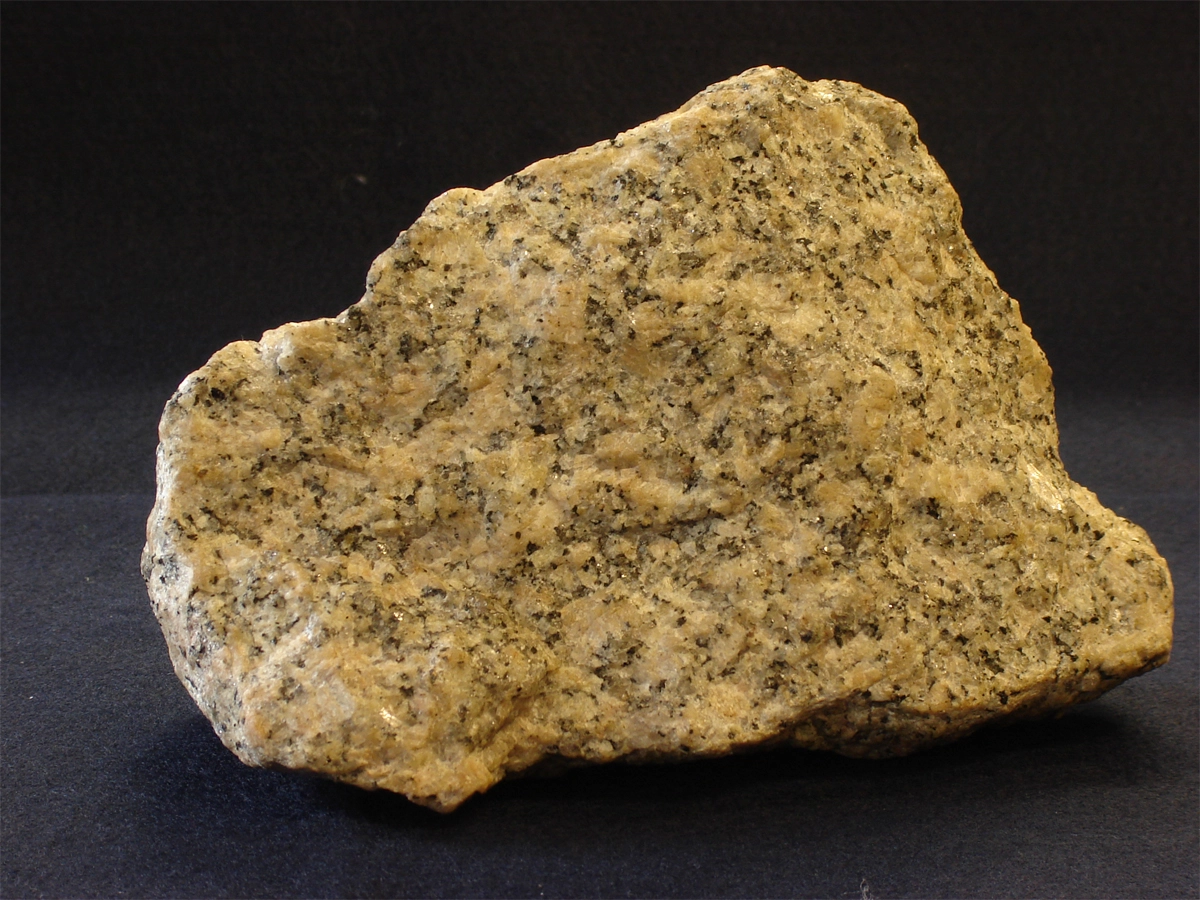Properties of Granite
Granite is a type of igneous rock that forms from the slow crystallization of molten magma deep within the Earth’s crust. It is composed mainly of three minerals: quartz, feldspar, and mica, along with various other minerals and trace elements. Granite is known for its durability, hardness, and distinctive granular appearance, which consists of interlocking mineral grains.

The following table provides a list of granite properties in both SI and US customary/Imperial units at normal temperature and pressure (NTP).
Click on the button to switch between Metric and Imperial units.
| Physical Properties | Metric |
|---|---|
| Density | 2640 - 2760 kg/m3 |
| Porosity | 0.1 - 4% |
| Mechanical Properties | Metric |
| Young’s Modulus (E) | 40 - 70 GPa |
| Tensile Strength | 7 - 25 MPa |
| Compressive Strength | 96 - 310 MPa |
| Modulus of Rupture | 10 - 20 MPa |
| Hardness (Mohs) | 5 - 7 |
| Thermal Properties | Metric |
| Thermal Conductivity | 1.2 - 4.2 W/m·K |
| Specific Heat Capacity (Cp) | 775 - 837 J/kg·K |
| Coefficient of Thermal Expansion (αL) | 6×10-6 - 2×10-5 1/°C |
| Electrical Properties | Metric |
| Electrical Resistivity | 104 - 109 Ω·cm |
Unless stated otherwise, all values are taken at room temperature (approximately 20°C or 68°F) and 1 atm pressure. (1 atm = 101,325 Pa)
References: 1) Cardarelli, François. Materials Handbook: A Concise Desktop Reference. Switzerland: Springer International Publishing, 2018. 2) CRC Handbook of Chemistry and Physics, 97th Edition. United Kingdom: CRC Press, 2016-2017. 3) A.M. Howatson, P.G. Lun, J.D. Todd, P.D. Engineering Tables and Data. United Kingdom: University of Oxford, Department of Engineering Science, 2009. 4) Stone: Building Stone, Rock Fill and Armourstone in Construction. United Kingdom: Geological Society, 1999.
